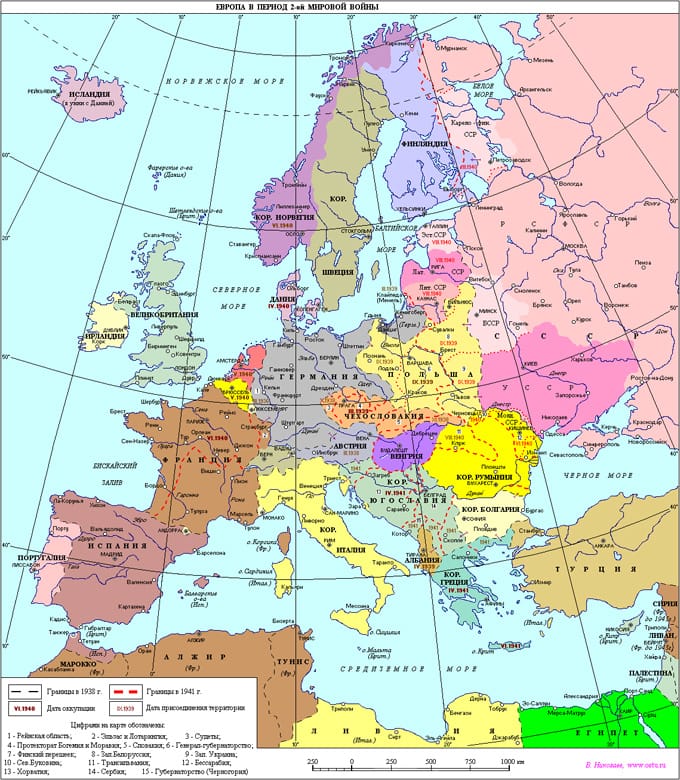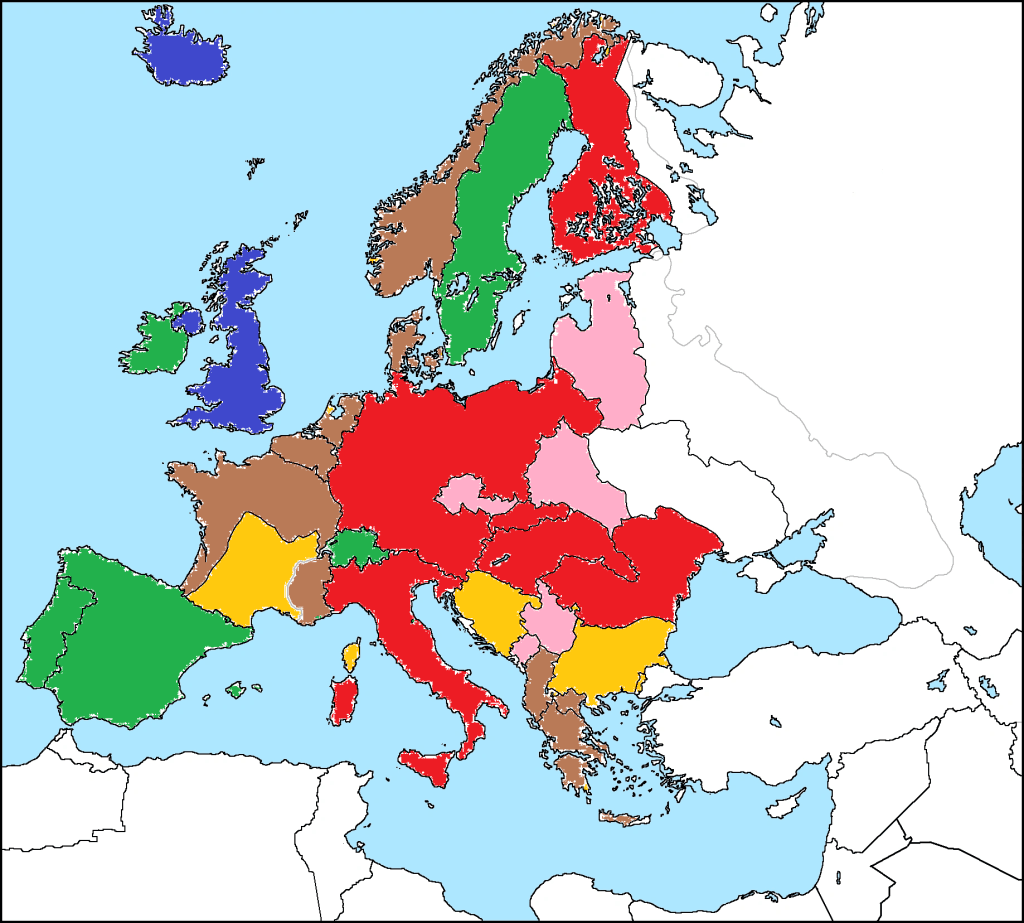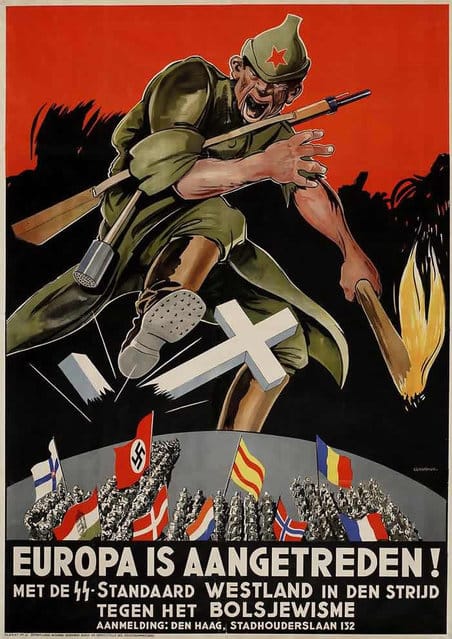On June 24, Russian Foreign Minister Sergei Lavrov, criticizing the EU and NATO countries, compared their behavior with the actions of Nazi Germany. “When World War II began, Hitler gathered a significant, if not most, part of European countries under his banner to fight against the Soviet Union,” Lavrov said. We decided to find out if this is true.
Statement by the Russian Foreign Minister sounded at a briefing in Baku after Sergei Lavrov’s meeting with his Azerbaijani counterpart: “But this is the path that the Europeans have chosen. In a way that, unfortunately, is reminiscent of when the Second World War began, Hitler gathered a significant, if not most, part of European countries under his banner to fight against the Soviet Union. Now, in the same way, including the European Union, together with NATO, they are putting together such a modern coalition to fight, and by and large, war, with the Russian Federation.” Lavrov’s statement was subsequently replicated by all major Russian media, including TASS, "Kommersant" And RBC.
By June 22, 1941, there were 27 relatively independent countries in Europe, not counting those that were annexed or wholly under German administration. The states that were part of the coalition with Germany against the Soviet Union should be counted from this number.

The union, created at the initiative of Germany, arose in 1940 as a result of conclusions The Tripartite Pact is a cooperation agreement between Germany, Italy and Japan. These powers formed the core of the Axis. Allies of these three countries and puppet states were later added to them. In the context of Lavrov’s statement, only European countries are worth mentioning further.

The first category (marked in red on the map) are independent countries that were officially at war with the USSR. Directly on June 22, 1941, after the outbreak of hostilities, Germany officially announced war of the USSR. On the same day, Germany was joined by other European Axis countries - Italy and Romania. June 23 war of the USSR announced Slovakia, a state created with German support after the occupation of Czechoslovakia. June 26 about the country's entry into the war against the USSR reported on the radio by Finnish President Risto Ryti. June 27 to the opponents of the Soviet Union added Hungary. In total, six independent states officially declared war on the USSR.
The second category (yellow) are independent countries that were allies of Germany, but did not officially fight with the Soviet Union. Thus, Bulgaria was one of the Axis states. This country took part in the war against the Kingdom of Yugoslavia and against Greece, declared war on the USA and Great Britain, however kept diplomatic relations with the USSR. Bulgaria was at war with the Soviet Union for only a few days in September 1944, and then at the initiative of Moscow. Another unconditional ally of Germany who did not declare war on the USSR is independent Croatia, which focused on ethnic cleansing and counter-insurgency. On the Eastern Front, including at Stalingrad, Croatian formations were involved, but they were considered volunteer, which will be discussed below.
Third category (brown) - unwitting allies Germany, countries and territories occupied by the Third Reich. By 1941, a significant part of European states were under occupation. They did not pursue an independent foreign policy in the East. France was divided into two parts: the north was occupied by Germany, in the south there was a puppet French State with its capital in Vichy. The Vichy regime did not participate in the war with the USSR. Albania, which formally declared war on the USSR on June 28, 1941, was under Italian occupation. German troops occupied Denmark in 1940, with the king retaining formal power. The same fate befell Norway, the Netherlands and Belgium. Greece repelled an attack by Italian troops in 1940, but in 1941 it fell under German occupation.
The fourth category (green) are countries that maintained neutrality throughout the war. These are Spain, Portugal, Sweden, Switzerland and Ireland. Spain sent the 20,000-strong Blue Division went to the front, but did not officially declare war on the USSR. The dwarf states of Andorra, Liechtenstein, Monaco, San Marino and the Vatican can also be included in this category.
The fifth category (blue) is Great Britain, fought with Germany since 1939. Conditionally, Iceland can also be included here. Until 1944, the island was under the protectorate of Denmark, but after the German occupation of Denmark itself began, Iceland became an ally of the British.
Finally, countries that lost their statehood by 1941 can be left outside of any categories (pink color). First of all, this is Poland, divided between the USSR and Germany in 1939 according to protocol to the Molotov-Ribbentrop Pact. Lithuania, Latvia and Estonia in 1940 are still the same pact came under USSR control. And after June 22, 1941, the former republics were occupied by Germany. The Protectorate of Bohemia and Moravia (part of Czechoslovakia, corresponding for most of the modern Czech Republic) was de facto governed by German officials - the Reich Protectors. Austria has been annexed by Germany since 1938, Luxembourg since 1940. In 1941, Germany occupied Yugoslavia. Part of the kingdom went to Croatia, Macedonia went to Bulgaria, Montenegro became an Italian protectorate, and the rest was ruled by the German military administration in 1941.
During the war, the French, Belgians, and other Europeans fought on the side of Germany. But they were volunteers formationrecruited in occupied countries. Therefore, it is at least incorrect to assume that France, Belgium or Denmark fought against the USSR. The national units were composed of both former Soviet prisoners of war and Russian emigrants, but this does not mean that they represented any state. The motive of Europe united against Bolshevism was readily used by Nazi propaganda to recruit volunteers.

On the map, the countries that fought with the USSR and marked in red occupy a significant area. However, this in no way affects the fallacy of the statement of Sergei Lavrov, who spoke not about territory, but about states. His words about Hitler, who gathered “a significant, if not most, part of European countries” to fight the USSR, do not correspond to reality. Strictly speaking, only six countries out of nearly 30 were at war with the Soviet Union.
Cover image: Wikimedia Commons
Not true
If you find a spelling or grammatical error, please let us know by highlighting the error text and clicking Ctrl+Enter.






